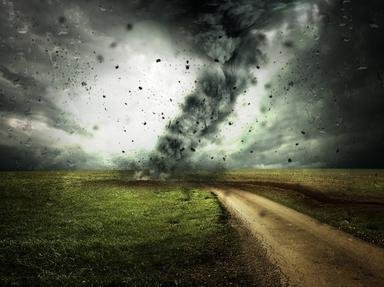Quiz Answer Key and Fun Facts
1. What type of winter weather preceded the spring flood?
2. Blizzard Hannah was the worst blizzard that swept the area that winter. What was the most lasting damage caused by the blizzard?
3. The flooding that Hannah caused occurred when streams and small rivers overflowed their banks, and shallow walls of water inundated the land, forming shallow lakes over large areas. What type of flooding is this?
4. The streams and small rivers that criss-cross the region flow into a larger river, which forms the border between Minnesota and North Dakota. It was this river's flooding that so devastated the region. What is this river?
5. What preparations were taken for possible major flooding before it actually occurred?
6. What was another factor in causing flooding during this nightmarish spring?
7. One common activity during early April that year was dike walking. What was this?
8. The small town of Harwood, just north of Fargo, made the national news for its flood protection efforts. What did the citizens of Harwood do to keep their town safe?
9. On April 18, the Red River in Grand Forks began breaching the dikes and overflowing the sandbags. What was the first warning that the situation was approaching disaster proportions?
10. When did the National Weather Service first forecast that flood levels would be higher than the diking system could withstand?
11. Although much of the city of Grand Forks was not under water, city officials nevertheless ordered over half the city evacuated. Why?
12. As if the flood weren't enough, what happened on Saturday, April 19, that left people across the country shaking their heads, unable to believe what was befalling Grand Forks?
13. How many people were killed in the flood?
14. How long was the Grand Forks "Herald" out of commission?
15. How long did the evacuations last?
16. What was the Angel Fund?
17. Was FEMA assistance available?
18. When people did return home, which of these is usually close to the first order of business?
19. Was it ever learned why the National Weather Service had failed to predict accurately the level to which the Red River would rise?
20. What, if anything, has been done to protect against a recurrence of this kind of disaster?
Source: Author
austinnene
This quiz was reviewed by FunTrivia editor
bloomsby before going online.
Any errors found in FunTrivia content are routinely corrected through our feedback system.

